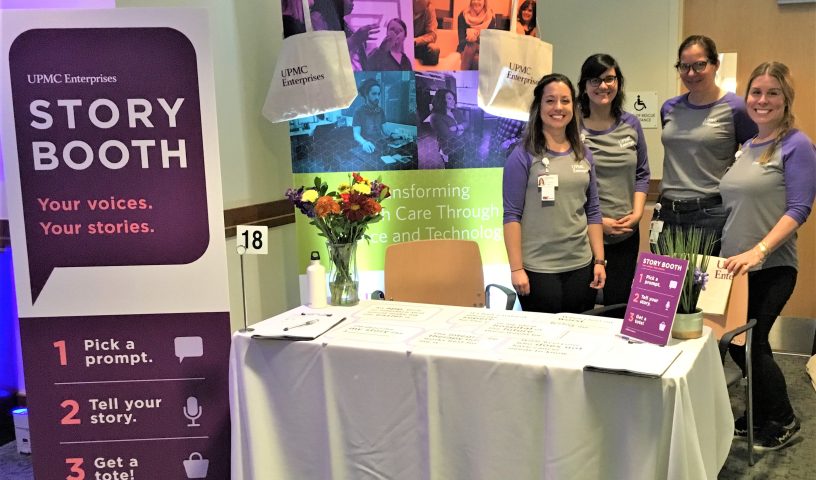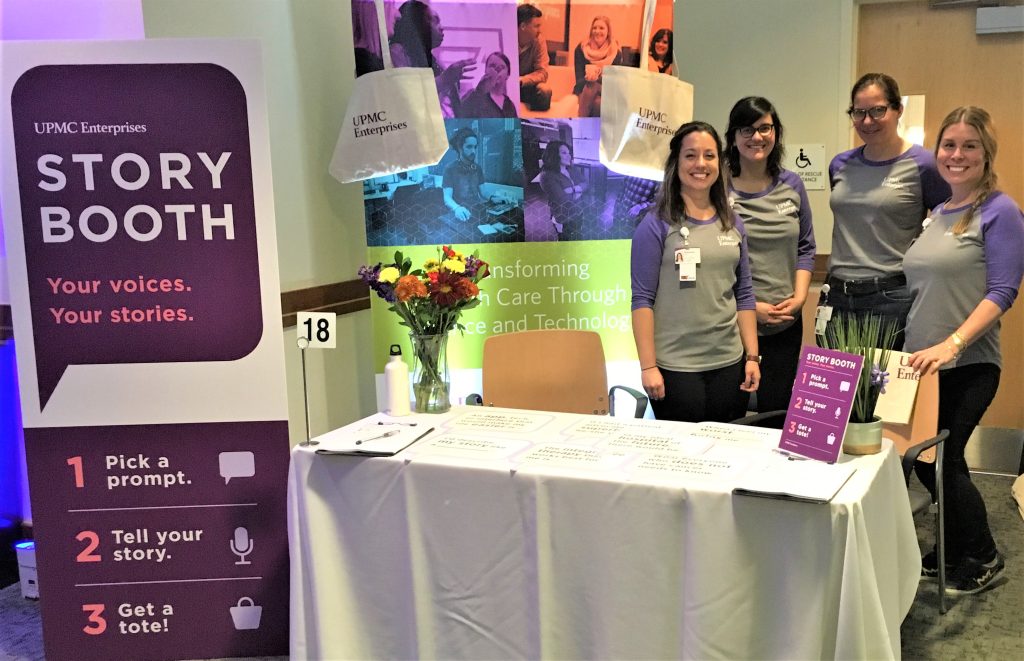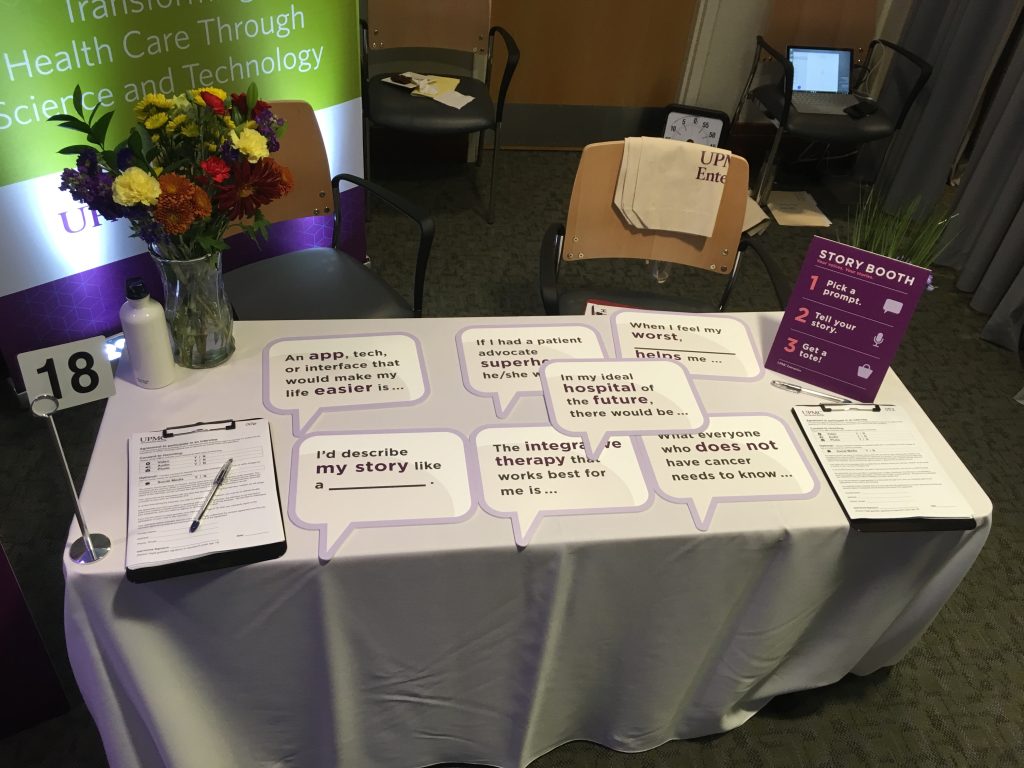
UPMC Enterprises designers look to the UPMC ecosystem to step into the shoes of their end users.
On September 25, the UPMC Enterprises team interviewed oncology patients at UPMC Hillman Cancer Center’s Annual Integrative Oncology Wellness Fair. Enterprises set up a booth that prompted patients to share their experiences by asking them to finish statements, such as, “In my ideal hospital of the future, there would be …” or “An app, tech, or interface that would make my life easier is …”

The Storybooth initiative is an example of a Human Centered Design (HCD) method that allows designers to surface the needs and desires of end users – in this case, oncology patients, caregivers, and staff. HCD methods are employed by designers working in many sub-disciplines of the field, such as User Experience (UX) design, which typically deals with the creation of digital software.
The objectives of the UPMC Enterprises Storybooth were therapeutic and strategic: give patients a platform to share their stories and collect the experiences and needs of oncology patients. Listening to oncology patients, grouping feedback into themes – known as “affinity clustering” – analyzing the data, and searching for insights that can help define features of a new hospital is an example of design research being applied to health care innovation at UPMC. It also is the work of designers at Enterprises.
At Enterprises, designers are usually embedded within product teams, and research is just one component of their work, and it can take many forms — including storybooths, surveys, facilitated workshops, fly-on-the-wall observation, and more. Research can be the end of a designer’s role in a project, or the jumping off point for involvement. Storyboarding, mapping service flows, creating concepts or wireframes, drafting a strategic approach, or even writing code and building the first version of a product are all functions of a UX designer, though most specialize in specific areas.

UPMC Enterprises Senior Designer Ally Reeves is part of a team seeking to improve the radiology workflow. “As a designer, you need to get in the shoes of your user — if that person went to medical school for 12 years and works in a unique environment, that can be difficult to do. So it’s really important to check back and not assume we have an analogous experience,” Reeves said.
That ability to check in with end users helps teams ensure they are building products that solve for the problem, and that the product works for the user. Frequent engagement is an opportunity to recalibrate with the customer, and, if needed, revise a feature or product before moving too far down the line.
Designers who implement HCD and UX utilize scientific processes and hard skills, but HCD is also an inclusive philosophy—and it complements UPMC Enterprises’ mission to create health care innovations that impact the lives of patients in meaningful, lasting ways.
If you’re interested in a design career in health care innovation, be sure to check the UPMC Enterprises Careers page!


